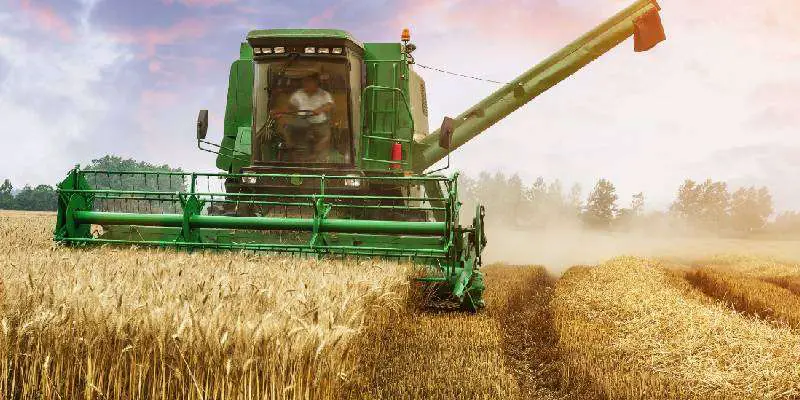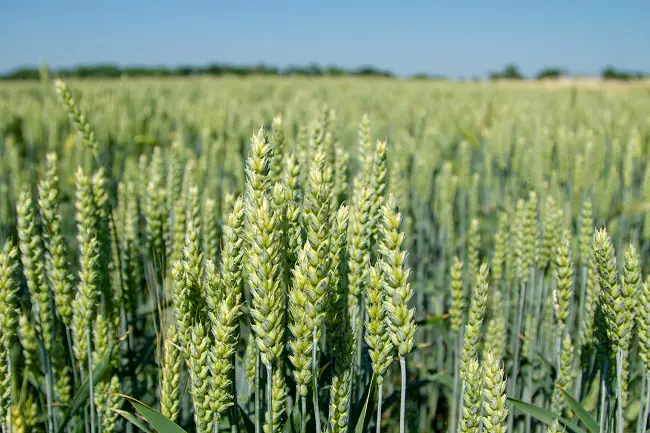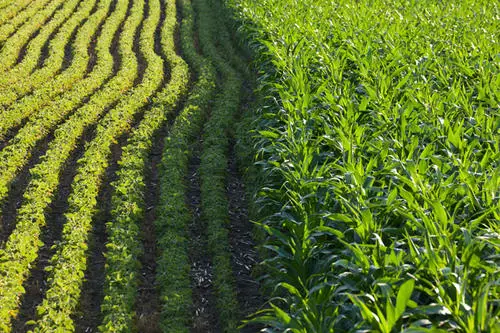Sugar beans farming is a rewarding venture if the appropriate variety is planted in the right regions at the right time with the right inputs. Fertilization has to be enough to stimulate crop to begin nodulation and nitrogen fixation in the soil. Weed control has to be done at early stages to prevent yield losses at early stages of bean crop development. Rotations involving sugar bean crop are beneficial to the following crop as it benefits from the N fixation from the sugar bean crop. It is recommendable to grow a cereal crop after sugar beans or any other leguminous crop so as to maximize on fertility. Sugar beans are consumed worldwide in different ways. Sugar bean is a great source of protein and other essential minerals. Once sugar bean crop and any other legume is grown in a field, the field is left richer in nitrogen, increased fertility.
Contents
Climatic Requirements
Sugar bean is an annual crop which does well in warm climates. The crop grows well and thrives in well drained soils. Sugar bean farming is best done in warm seasons as the bean crop is very sensitive to frost. Sugar beans require at least 600mm of rainfall per season to perform optimally, slightly lower rainfall can grow the crop but yield will be adversely affected. Temperatures exceeding 30 degrees Celsius are harmful during flower initiation phase of the crop as it leads to premature abortion of flowers hence poor pod set.
Soil Requirements
Sugar bean farming is best done in fertile soils which are well drained, soils with poor drainage lead to crop rot and lodging. Sugar beans are best grown in warm soils that have a temperature range above 14 degrees Celsius. Planting of the crop requires a well done seedbed, with good soil depth and nematode free. It is important to use flat land to increase uniform depth at planting, planting should be done in such a way that there is good soil seed contact. Sugar bean farming is best done in soils with a pH range of 5.0-6.0, acidic soils are not ideal as the crop is acid sensitive.
Fertilization
Fertilizer recommendations for sugar bean farming should be based on soil testing, just like any other crop. Manuring, lime, basal and top dressing fertilizers are recommended. Amounts of fertilizer is depended on soil test results. In some cases, there may be need to inoculate sugar beans with rhizobium to help the crop with biological nitrogen fixation. It is to be noted that too much nitrogen fertilizer results in excessive vegetative growth at the expense of fruit set and grain filling.
Sugar Beans Irrigation
Irrigation of the bean crop has the potential to increase yield through managed moisture levels and making production possible outside the normal growing season. Various types of irrigation systems can be used in sugar bean farming, drip and sprinkler system are amongst the ones commonly used. Choice of irrigation system depends on a number of factors such as cost, land area and topography. Irrigation should be done up to field capacity especially prior to planting or soon after planting. Critical stages such as flowering and pod set and pod filling must not coincide with moisture stress as this leads to flower abscission and loss of yield. Irrigation scheduling must be done in such a way that moisture is adequate, no moisture stress, no excess water. Excess moisture leads to an outbreak of fungal infections and root rots. Once crop is close to reaching physiological maturity, irrigation should slowly seize to avoid issues with excess moisture in the grain at maturity stage.
Weed Control
Efficient weed control is a pre-requisite for high sugar bean yields as the crop competes poorly with weeds. Bean crop does not do well when the crop has to compete with weeds, hence under sugar been farming weed control is of paramount importance. Choices for control of weed problems can be mechanical or chemical. Mechanical control of weeds must be done carefully and before flowering stage to prevent flower drop, hoes and other tillage implements can be used, hand pulling of weeds can also be done on small land areas. Chemical control can be pre or post emergence, depending on herbicide used.
Pest and Disease Management
Integrated pest management techniques are recommended for use in the control of insect pests in sugar bean farming. Grower has to constantly scout the field for pests such as bean stem maggots especially at pod formation and pod filling stages, thrips, aphids and so much more. It’s of paramount importance to control pests when they reach economic injury level(EIL),plans for control have to be put in place once pest population has reached economic threshold levels (ETL). Chemical, biological or mechanical methods may be used for the control of pests in sugar beam farms. Diseases such as anthracnose, rust and leaf spot have to be watched out for, control measures implemented once disease has been significantly noticed. Bacterial, viral and fungal infections have to be scouted for and control measures implemented all in good time before a disease outbreak.
Harvesting Sugar Beans
Sugar beans farming involves harvesting the crop once grain moisture content has dropped to around 15%. Bean crop is pulled from the ground early morning when crop is surrounded by dew to reduce chances of shattering. Harvesting at physiological maturity immediately is not good as the grain has high moisture content and gives problems of molds at storage unless further dried. Threshing has to be done before the grain reaches moisture percentage less than 12 percent, at below 12% the risk of grain splitting is high. Bean threshing can be done both mechanically using tractors on threshing floors or by hand using threshing poles. Some of the harvest indices in sugar bean farming include change of color of crop from green to yellow and change of pod color from green to yellow as well. Bean plants should not be left to dry too much to an extent of shattering in the field. After harvesting the bean crop, grain must be stored in a cool dry place at the correct moisture content to increase shelf life of the dried grain.




